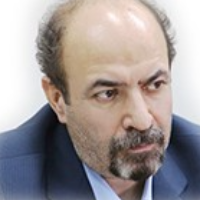Measuring and Comparing the Degree of Pro-Poor Growth in Islamic Countries oach
Poverty is one of the main factors human has faced society throughout history. High economic growth over the last decade has given rise to the idea that growth can reduce global poverty. In the 1950s and 1960s, most developmental ideas about growth and poverty was also about trickle-down growth. It was then widely thought that growth would lead to an increase in poverty, an idea that Bhagavati presented in 1988 during the Green Revolution. But in two decades, the developmental literature on pro-poor growth has expanded. Inequality is just as important as growth because increasing inequality leads to an increase in social class distance and might cause failure in improving the situation of the poor in society. Since the Kuznets assumption states that growth in the early stages leads to increased inequality as long as countries earn an average income, growth will support the poor when, in addition to reducing poverty, it has also helped reduce inequality.In this study, the relationship between the three concepts of development, namely poverty, inequality, and growth, using the indexes of pro-poor growth (Kakwani & Pernia, 2000; Kakwani & Sun, 2003) in 9 Islamic countries, has been examined and the latest available data in PovcalNet Information Base and Stata analytical distribution package was utilized. The main purpose of this research is to examine the nature of growth without considering the determinants factors of growth. The results for Kazakhstan (2001-2006, 2006-2006, and 2010-2010) show that growth has led to a reduction in poverty as well as a real reduction in the inequality between the poor and the rich, which reflects a high pro-poor growth in this country. Moreover, Tajikistan (2004-1999) has also experienced the largest reduction in poverty. The results show that the nature of growth in Tajikistan (2009-2005) and Turkey (2002-2002), which experienced positive growth, was poor by measuring various poverty indicators. Moreover, the nature of the growth in Iran during 2014-2006 using pro-poor growth index (PPGI) and Poverty Equivalent Growth Rate (PEGR), has been poor and pro-poor, respectively. In general, the results showed that growth in Islamic countries cannot be regarded as a relative pro-poor growth. If the pro-poor growth is measured by different indicators of poverty, people close to the poverty line will benefit more from growth than those who live far from the poverty line (the poorest poor).
Poverty , Pro-poor growth , Inequality , DASP
- حق عضویت دریافتی صرف حمایت از نشریات عضو و نگهداری، تکمیل و توسعه مگیران میشود.
- پرداخت حق اشتراک و دانلود مقالات اجازه بازنشر آن در سایر رسانههای چاپی و دیجیتال را به کاربر نمیدهد.




